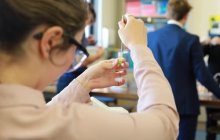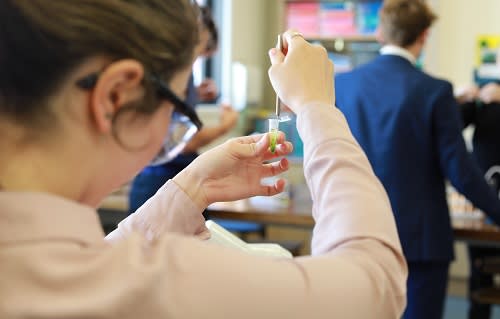
Upper Sixth A Level Biology students recently investigated how the thylakoid membranes of chloroplasts in spinach respond to light. They had to isolate chloroplasts from spinach plant cells and put some under a lamp and some in darkness.
This procedure was first developed by the scientist Robert Hill. He discovered that chloroplasts continue to perform some of the reactions of photosynthesis when they are provided with the right conditions in vitro (within a glass test tube).
The ‘Hill Reaction’, as it is known, depends on electrons being released during the light dependent stage of photosynthesis and in this experiment this was highlighted by the blue electron acceptor DCPIP. The students were able to observe how the blue colour in DCPIP indicated the absence of the photosynthesis process, whereas the loss of colour confirmed that photosynthesis activity, which is light dependent, had occurred.
Mrs Kate Klymow, Head of Biology, said: “This test could be used to investigate the effects of different colours of light on the rate of photosynthesis. Recently, this idea has been trialled in both greenhouses and underground salad farms. It can also be used to find out the precise effect of certain herbicides on photosynthesis in weeds.”




















